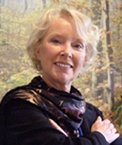 [From the Editor] Rebecca Kali
[From the Editor] Rebecca Kali
Welcome to the March-April issue of Yang Sheng! The theme this month is “Integration of Body, Mind and Spirit.” What does it really mean when our body, mind and spirit are integrated? What supports it? Webster defines integrated “as combining or coordinating separate elements so as to provide a harmonious, interrelated whole.” If our body, mind and spirit are not integrated are we disintegration? There certainly are many factors in our modern culture to make a person feel that way, sort of like our “particles” are not all together, fragmented. How do we get them back together? That has been a lifetime’s quest for many; searching everywhere for the key to our own wholeness, completeness, balance, healing. Looking outside of ourselves – when we really had all we needed – were all we needed – all the time. Yang-Sheng practices supply the missing key.
There are many articles in this issue, which offer insight on the integration of Body, Mind and Spirit. “Nurturing Mind is the Core of Nurturing Life (Yang Sheng) 养心是养生的核心” by Kevin W Chen, Ph.D. MPH – Yang Sheng (養生) which was presentation by Dr. Chen at the World Assembly of Yang Sheng, Dec. 28-30, 2011, Hangzhou, China stresses that nurturing mind is of primary importance in the process of nurturing life.
In “How Circularity Leads to Smoother Mind-Body Integration” Dan Kleiman tells us when it comes to movement practices like taiji and Qigong, the key to smooth mind-body integration is having more circularity in your art. He offers tips on learning to integrate circularity into your practices and glide through them more with a greater sense of internal connection. Jacob Newell explains that ” Gongfu (功夫)” refers to special skill acquired by long, hard practice. Often equated with martial art, it actually applies equally to any kind of skill, such as excelling, creating beautiful art, or delivering an eloquent speech. Understanding the process of developing gongfu is important if we want to achieve excellence in any field including body, mind, integration. In “Taiji and Science Scientific Taijiquan” Chun Man Sit shares the importance of practicing Taiji in a scientific way and how understanding the principles of physics and using modern technology such as Video can help improve one’s practice.
Arthur Rosenfeld offers sage advice on the wisdom and benefits of redirecting our efforts from compulsion to internal awareness, from materialism to spirituality in “Investing in Ourselves.” Nan Lu, OMD offers insights on understanding why we really practice and keep motivated to do it in “Staying Motivated in a Body/Mind/Spirit Practice.”
In “Daoist Body Cultivation and Behavioral Kinesiology” Livia Kohn, Ph.D. informs us that quite independent of the Chinese and Daoist understanding of body and Qi, the Western science of behavioral kinesiology developed a system that is surprisingly similar, equally valid and supports everything Daoists have been saying all along about the nature of body, self, and society. Michael Winn explains that the central purpose of nei dan practice is to re-grow the spark of Original Energy (yuan Qi) that is buried deep within each human being in “Daoist Internal Alchemy: A Deep Language for Communicating with Nature’s Intelligence (part 3).” If this spark of original Qi is birthed into consciousness on Earth, it will restore life to its innate state of grace and effortless communication (wu wei) between Heaven, Earth, and Beings. Cultivating yuan Qi is actually growing Heaven on Earth.
In “What’s Your Food’s Nature?” Ellasara Kling shares information about the nature of foods, categorized by essential temperature, based on Five Element Theory. In “Food Healing: East Meets West” Aihan Kuhn, C.B.D, Dipl., OBT – tells us even though “You are what you eat,” is not 100% true, it certainly rings a bell and gets our attention. Food can be our best friend or our worst enemy. Helen Hu, OMD offers insight into the causes of Asthma from the perspective of TCM as well as healing recipes for Ginger Rice Soup, Eight Treasure Chicken, and more.
In “Changes” Doe Zantamata tells us routine can feel secure. It’s familiar, we know what to expect. However, “routine” is not the way the world works. The world is constantly changing and becoming as curious and comfortable with change as you were when you were a child is a major life skill. In “Heart Qi: Some Clinical Vignettes – Body Mind Spirit … Heart!” Nadia Linda Hole, MD shares some case studies and asks, “No matter what symptoms your clients present – What’s the root source? What’s their Heart of Hearts truly asking for?”
My role as the Editor-in-Chief of Yang-Sheng comes to an end with this issue. It has been a pleasure and a privilege. However, it is time for me to move on to take care of other responsibilities and respond to the demands on my time from my own business and Omega Point Multi Media, the business I own with my husband, and my teaching, retreat and China tour schedule and to share Yang-Sheng practices in other ways. Although I am not going too far, I will still be involved with Yang-Sheng as an Associate Editor.
I would like to send a hearty welcome to Christine Berea, one of our Yang-Sheng Associate Editors, who will step into the role of Editor-in-Chief beginning with the next issue.
As we approach Spring, the energetic expression is expansion. It is the season that naturally engenders our being more outgoing, expanding our experiences and horizons and giving expression to our sense of creativity. It supports us in manifesting what we want in our lives. I invite you to give yourself the gift of really taking time for yourself, take time to follow the Life Nurturing practices of Yang-Sheng and while you are at it…. manifest greater peace, harmony, health, and well-being than you can imaging – for you and for everyone you meet.
Just do the practice…and expect miracles!
Rebecca Kali, Editor-in-Chief
